2014 Minnesota Vikings: Scouting the New England Patriots
The Minnesota Vikings arguably are facing their first “true” test of the season, what with the St. Louis Rams being discounted by national and local media alike (for national media, somewhat post-hoc) for fairly legitimate reasons.
But the New England Patriots aren’t just a different beast from a talent perspective, they’re entirely different category of schematic obstacle. Not for nothing, the Patriots are known as one of the most creative teams in the NFL on both sides of the ball. From pioneering hybrid fronts to bringing the H-back to the fore, there are significant influences the Patriots have leveraged to the rest of the league, and there are more to come.
Against the Miami Dolphins, the Patriots fell short, especially after an inefficient second half, where they scored zero points. Much has been made of the Patriots’ record after a loss (13-1, according to Zimmer in the last 14 losses and 32-4 since 2003 according to Brian Hall). I don’t think that’s particularly relevant. In that time frame, they’ve gone 138-38, or 78.4%. A 32-4 record is 88.9%, which is what you’d expect is similar to the record a team would have if you eliminated their 38 best opponents.
Instead, the New England Patriots are just very good and there’s not a lot of evidence that we should pay much more attention to the fact that they’ve done better off of losses. The converse of this, of course, is that the Patriots would be worse after a win (75.7%) which is difficult to conceive of as important.
Historically, Mike Zimmer and Norv Turner have done well against New England. Since 2001, Zimmer defenses have met New England offenses three times. In that time, they’ve allowed an average of 18.7 points and had a defensive DVOA of -24.0% (negative defensive DVOAs are good). That DVOA would be the second-best defense of 2013. Further, a recency-adjusted DVOA would be 39.2%, the best in the NFL and 15.8 points allowed. It’s not a large sample size, but it’s encouraging. Though the Mike Zimmer Bengals likely had more proven defensive talent, there’s reason for optimism.
Norv Turner has scored 20 points a game and a recency-adjusted points of 21.1 per game. The offensive DVOA is 3.0%, and recency-adjusted offensive DVOA is 6.5%. Because there are 11 data points, it is slightly more robust. Once outliers are eliminated, the points per game and DVOA rise to 21.9 and 10.8% respectively. Again, there are really not that many data points to draw a real conclusion, though many of Norv Turner’s teams were not as talented—his 2002-2003 Dolphins met the Patriots four times and had fewer weapons and likely a worse quarterback. His 2004-2005 Oakland Raiders were even worse. This may be balanced out by his 2007-2012 Chargers, but including his stints in San Francisco and Cleveland tilts his available talent against him.
Regardless, shallow historical analysis would imply that the Vikings are well equipped to coach against the Patriots, with a 1.3 to 6.9 point advantage in prior meetings. Still, the game isn’t won with history, it’s won with current matchups and coaching, and the Vikings are in a tough spot in that regard.
Offense
On offense, the Patriots are naturally one of the best equipped in the league. Their 2013 offenses was as different from their 2011 offense as that one was from its 2007 offense. That said, it seems more and more that the Patriots offense, and Tom Brady in particular, is in for a down year.
Though they finished the year with positive defense-adjusted value over average (a Football Outsiders metric that takes into account success rate and rate statistics, like yards per attempt)—fourth overall—they were one of the most variable offenses in the league, in part due to tight end Rob Gronkowski’s availability and the gradual improvement of players like Aaron Dobson.
But another factor played a role in Tom Brady’s play last year, which looked worse on film than it did in the box score—where it didn’t look particularly impressive (for Tom Brady) either. His adjusted net yards per attempt, a measure of efficiency that gives yards for touchdowns and penalizes interceptions and sack yards, he ranked 14th in the NFL (if you take away sack data, he still ranks 14th).
In games without Gronkowski, he would have ranked 28th in the NFL, and with him 9th. Neither of those are up to the efforts Brady normally produces. In 2012, he ranked 3rd. In years previous, he ranked 2nd, 1st, 8th and 1st. That year he ranked 8th, he was just coming off of his ACL recovery.
But in 2013, he was rattled by pressure, particularly from the interior, had some footwork issues—shockingly, as he was a league standard for mechanical perfection—and had big ball placement issues. Film study from different sources back it up. His sudden issues managing the pocket were a bigger problem in terms of production than his receivers, who improved over the year.
There’s some quick confirmation in relevant data for that, as well.
Pro Football Focus found that Tom Brady ranked 28th of 42 quarterbacks in accuracy under pressure, a measure that eliminates throwaways, spikes and dropped passes. His grade under pressure was -13.2. Compared to Peyton Manning (+6.3), Drew Brees (-6.4), Aaron Rodgers (+2.7), Philip Rivers (+8.9), Russell Wilson (+5.1), Ben Roethlisberger (-5.6) and even Matt Ryan’s down year (+2.2), he was in far worse shape.
Further, his general accuracy ranked 18th of 41 quarterbacks in general accuracy rating without pressure. When adjusting for his average depth of target, it’s not much different, ranking 19th.
These wouldn’t be relevant were it not for his performance against Miami, which was plagued with much the same.
That’s not to say Brady is eternally bankrupt against pressure or consistently poor at pocket management now. Even in the Miami game, he had more than a few snaps with some of the best pocket presence you’ll ever see—which has been his strength against other elite quarterbacks for years now.
Because of the issues with the interior line (though the entire offensive line was suspect, injuries and generally subpar talent was evident on the inside), Brady was in shotgun 41 of his 60 dropbacks. That’s an eye-popping amount, considering that in the past three years, he’s been in shotgun around 45 percent of the time.
Over a year, that amount would have been the second-most snaps from shotgun in 2012 and would have ranked sixth in 2013. Normally, they rank 28th or so.
For the most part, New England’s offensive play design in the passing game is not much different than it was the last time they had McDaniels. The route combinations are designed to stress zone defenders with either flood zone or high-low concepts, and the strength of the formation almost always contains a triangle-read concept—a passing progression that isn’t defined by which receiver gets open so much as what the defense dictates.
That either works off of coverage keys (a certain coverage, like Cover-2 off-zone, will predefine a read) or defender key (if a particular defender leverages to cover one of the defenders, there are rules for which receiver to throw to). It’s a staple, but particularly important to the Erhardt-Perkins offense New England runs. It is designed such that there is no “correct answer” for the defense, which is the same philosophy, though different in execution, as the read-option.
Further, nearly every pass package includes a deep option. Sometimes it is a late developing play, like a wheel route. At other times, there will be seam routes, posts or go routes. On the rare occasion that the passing packages did not include a traditionally deep play, a deep corner route exists, too.

Logged passing plays from the Miami game. Always a deep shot and always a triangle read somewhere on the field
Tom Brady aside, there are personnel concerns and points of weakness for the Patriots. The first concern is naturally Rob Gronkowski, who has the ability to exploit the natural weakness the Vikings have in covering tight ends. Though a player like Anthony Barr was drafted specifically for this issue, it may be too early in his development before he can reasonably be a defensive force in this respect.
Luckily for the Vikings, Gronkowski is still relatively limited. Normally a player to take 75 percent of snaps, he took less than half against Miami and was a nonentity for more of them than he usually is. His range looks a little more limited and he hasn’t been winning his contests quite yet. That said, he’s still a size/speed mismatch for most of the defense and will be open, even when “covered”. His chemistry with Brady seems to be off, and he hasn’t used his excellent mitts to reel in tough catches and dropped an easy one, while misadjusting to two others. He has still been an excellent blocker in both the run and pass game, however.
The offensive line will remain an issue for New England as well. Though they’ve mostly stuck to zone running, allowing the backs to choose which holes to go through, the interior of the line can still get manhandled pretty well. They have five players listed as limited participation and no player who is out, so the injuries sustained against Miami (the injuries that forced Ryan Wendell in at center) will not appear again. If they start with the same players on the offensive line, they’ll have a line of Solder-Cannon-Connolly-Devey-Vollmer.
That would be a disaster for them. Connolly is an overrated center who has occasionally put together a good game, but more often than not has been at issue. Throughout the Miami game, Earl Mitchell—a one-gap nose tackle import from Houston—tore apart the New England offensive line, starting with Connolly. He got bodied.



Ignore the jet sweep. This play is relevant because Connolly was supposed to get to the linebacker without having to touch Mitchell. Mitchell had other plans. It’s a phenomenal play that screws up blocking.
Their left guard, Marcus Cannon (also a backup tackle, a job he actually performs quite well) did poorly against a rotation that included Mitchell, Jared Odrick and Randy Starks. He had some minor issues as a run blocker, but for the most part was able to force his opposition laterally in the zone runs away from the play. His issue was maintaining leverage against the pass, where he gave up three hits and a hurry by my count. The bigger problem is Jordan Devey, who may be the worst starting guard in the league, and borderline unrosterable.
Devey had a terrible preseason and was slated to start this game for no discernible reason. He predictably had a terrible game. Not only did he give up hurry after hurry, he was not a particularly adept run blocker despite the impressive averages the Patriots put up in the run game. He’s #65 below (the right guard, but from this end zone camera on your left).
This isn’t just Earl Mitchell being good (he is). He was perhaps the worst-performing guard in the preseason, and certainly the worst one who ended up taking starting duties. He did line up against good defensive linemen with the Eagles, Panthers and Giants. That’s irrelevant, because Linval Joseph is likely better than anyone Devey has gone up against as a pro.
Sharrif Floyd will need to show up in order for there to be a consistent defense against the run, however. The Patriots will continue to engage in zone blocking in the run game in part to hide some of the weaknesses of their offensive line (and to emphasize its quickness), which means discipline is much more important than aggression, and defensive linemen will have to stay in their lanes in order for the run defense to work at all.
On the edge, both Vollmer and Solder are good tackles that probably just had bad games. Regardless, both Everson Griffen and Brian Robison are better than average edge defenders and need to prove it; Griffen’s sacks in cleanup against a quarterback critically lacking in awareness will not be a good test against these tackles and Tom Brady, and both will need to demonstrate better flexibility when not selling out against the run.
Critical for them will be maintaining keys against the run. One of the reasons that the Patriots do so well on play action is because the offensive linemen, quarterback and running back all sell the run very well, and cheating against that will lead to some screen passes for relatively big gains. Because the zone running the Patriots engage in can allow them to block without getting downfield, it’s a particularly difficult key to pick up.
The linebackers will have a lot of trouble with tight ends Gronkowski and massively underrated talent Tim Wright. Wright is an accomplished route runner that was buried and then not used in Tampa Bay, and should explode with the Patriots in short order. Both of them represent different matchup problems, and while Gronk will win with size, positioning and radius, Wright can win with speed and route-running. This should create specific challenges for whoever covers who, and it may be the case that the Vikings will specifically assign players for each of the tight ends, perhaps putting Harrison Smith on Wright when he’s on the field and Anthony Barr on Gronkowski with some help over the top.
The problem with committing the safeties is relatively obvious given the nature of the Patriots passing game, generally designed to move two defenders out of the box with the deep threat taking a safety and often a corner downfield. The purpose of this is not necessarily to ease coverage in the middle (though it will do that) or to create additional room in the running game (the effect is overstated) but to remove the number of tacklers in the box on short gains, so the Patriots can gain additional yards after catch—something the Patriots historically excelled at, though Tom Brady’s ball placement has declined as of late.
Regardless, they’ll do what they can to create that kind of room, and the Vikings will need to be cognizant of it, perhaps creating different rules for deep receivers. Though Tom Brady passed it deeper than he usually does in this most recent game—17.9% of his attempts went further than 20 yards downfield, compared to 10.9% last year—this may have been the result of getting blanked in the second half while the Dolphins rallied back. Whatever the case may be, the Vikings will have to be wary, but not overcorrect for those deep shots so they can contain the intermediate and short routes that can gradually bleed the defense dry.
The receivers are a mixed bag. Danny Amendola doesn’t see the field that often, but is a very talented receiver. Though he has a lot of skill at different receiver positions, the Patriots used him exclusively in the slot save for one or two plays. He plays more physically than most slot receivers and has good burst to take advantage of space.
The more important receivers are Aaron Dobson and Julian Edelman, both of whom play outside. While Dobson doesn’t have killer speed, he’s a legitimate vertical threat that tends to get open downfield, and if he’s healthy the Patriots will put him on the field (which they didn’t do against Miami) in ways that will stress the defense more effectively than having overpaid Brandon LaFell or tight end Rob Gronkowski being the go-to deep threat.
Dobson’s improvement in the final stretch of 2013 speaks well to his ability to put together good games that will threaten the Vikings, and the two will match up their reputations for physical play in the passing game. Xavier Rhodes should have the advantage when the two are lined up in that context, jamming well off the line, but the jury is out on how physical Captain Munnerlyn and Josh Robinson can play on the outside while still maintaining positioning and recovery speed.
Kenbrell Thompkins is the better receiver between him and LaFell, but LaFell keeps seeing snaps, which is good for whoever plays the Patriots. LaFell doesn’t seem to have the general capability or spatial awareness to continue getting separation in-route like Thompkins can, sometimes the result of subtle moves when covered tight and otherwise a display of finding seams in zone coverage. Either way, the Vikings will have to watch out for the two, but shouldn’t worry about rotating coverage.
Running backs Shane Vereen and Stephan Ridley are both very talented backs and took advantage of deception and overpursuit along the Miami line as well, though neither showed the vision they both are known to have and didn’t break too many tackles. Expect them to be better at both against the Vikings, though may end up with fewer yards per carry—they both had a low success rate buoyed by some larger gains (though not very large).
Vereen is a very good pass-catcher and is often split out wide to run a variety of routes. Against man coverage, it creates unusual problems, especially for defenses that like to remain assignment sound on the outside and pick up outside receivers with cornerbacks, creating mismatches on the inside. The Vikings will keep cornerbacks on one side of the ball, but will probably maintain specific assignments for the backs and tight ends so it doesn’t have this problem.
He is the only other player who may need a specific plan, because he can be a threat as a receiver, but should not demand a schematic change that forces the Vikings into nickel, as they can revert to a base running looks without giving up much capital.
In general, this would seem to imply that the Vikings should find ways to put pressure on the quarterback because it is their best avenue of victory, but in reality, the Vikings should find ways to produce pressure from their front four and keep six or preferably seven in coverage. One of the key points in the famously complex Patriots offense is the heavy use of sight adjustments, both against particular types of coverage and blitzes.
The result here is an incredibly difficult to learn system, but one well-designed to take advantage of any blitz or open receivers. Despite Brady’s issues with pressure, he still does well against blitzes, pressure or no pressure, because he’s still one of the top in the NFL at exploiting blitzes and holes in coverage.
Defense
On defense, they continue to mix looks along the front seven, and against Miami often turned their strong-side defensive end into a “Jack” linebacker—a hybrid defensive/end linebacker that still focuses primarily on rushing the passer, but will drop into coverage more often than the typical 4-3 end.
This creates additional blitz opportunities for New England and confuses blocking schemes in a way that the double A gap look doesn’t (though Zimmer’s tendency to drop ends in coverage is very similar), and in particular creates massive issues for hot routes, who may be covered by the Jack linebacker—a player that may often be open against a traditional 4-3 front. Given Chandler Jones’ and Rob Ninkovich’s backgrounds, this set of responsibilities fits their skill set.
This creates unique problems when designing run blocking, but Miami overcame many of those because of the exposure on the defense, especially against Miami’s outside zone runs. Below, one of the exotic fronts the Patriots used could create confusion, but at the expense of discipline. Miami ran for five yards with Knowshon Moreno—someone whose abilities I don’t hold in particularly high regard.
Here, the Jack linebacker (marked “J”) is two-gapping the offensive tackle, while the under-tackle (Vince Wilfork, marked “T”) seems to be one-gapping the guard, but is really attacking the A gap. Joe Vellano (“N”)is in a one-gap look, but ends up two-gapping the guard. The Will linebacker, Dont’a Hightower, is off-screen, but is responsible for the alley.
Because the Patriots will throw in one-gap, two-gap and hybrid one/two-gap fronts, the Vikings may be best suited to sticking to zone principles when running against them. Because the Vikings are so massively diverse in their run game, employing concepts at different times from so many different schemes, the Vikings give themselves the tools to attack any defense.
In this case zone running is particularly apt for two reasons: the first is that with a consistent set of rules for each lineman, the blocking schemes will be simplified despite the unusual looks the Patriots will provide. The second is that it will reduce the communication problems the offensive line showed that they might have in the St. Louis game.
In the second half, the Patriots switched largely to a two-gap 3-4 front instead of the hybrid defense they were employing early on. Removing Wilfork, Jones and Ninkovich from one-gap duties didn’t suit the Patriots well and the dominant play that Wilfork put together early in the game. In fact, most of the defensive linemen were doing a great job until the adjustments during the half limited them to a traditional 3-4 look that they seem unprepared to work with.
The linebackers didn’t adjust well to this new gap alignment and allowed big runs by Knowshon Moreno, and there were significant gap integrity problems. The Vikings will likely not be able to exploit this because of post-game adjustments, but keeping things simple will make it easier, not harder, to find these holes.
In the passing game, things are more complex. Matt Cassel will need to have a good handle on protections in order to deal with all the different looks the Patriots can provide, and he and John Sullivan will absolutely need to be in sync. Though Sullivan and Fusco are dominant at their position—or at least were last year and last game—Vince Wilfork will be extremely difficult to handle and they’ll get through from time to time. That interior pressure can cause trouble for any quarterback, but for one so dependent on timing and consistency can be particularly bad for Matt Cassel.
On the edge, there’s not much to say except that Matt Kalil needs to figure things out. Though he escaped the game with a good pass blocking and run blocking score from PFF (and good statistics—one hurry and one hit given up), his technique was fundamentally poor and Robert Quinn had him on his heels all game. It honestly looked like a bad game even after removing the two penalties, and he got away with more than one hold in order to save the block, holds that normally would be called.
Phil Loadholt against Rob Ninkovich will be fascinating in general because the two of them are both underrated at their position. Loadholt’s good game against Chris Long will be a nice resume going in for a solid game against one of the league leaders in quarterback pressures, as well as one of the most dominant run defenders on the edge in the NFL. The Vikings ran at Loadholt eight times with Adrian Peterson and averaged 4.8 yards a carry off of him, compared to his 2.7 yards per carry running anywhere else. It’s a testament to how often the Vikings chose to run right that brings his total yards per carry up to 3.7 at all.
With that defensive line are very solid linebackers, who despite a bad game against Miami, are traditionally very good at sussing out the run. The bad game that New England had against the Dolphins doesn’t do a disservice to Dont’a Hightower, who was solid all game despite being split wide at times to cover tight ends.
It’s their play in the passing game that should have the Vikings more worried however. Just like they vary their personnel, the Patriots coverage scheme is a difficult nut to crack. Often they will play several different shells, including Cover-1 man, Cover-3 zone and Cover-4 zone to supplement their primary coverage, pattern-matching.
This kind of coverage is also called zone-reading, because the defender will read receivers who come into his zone and then pick him up and play man coverage against him based on certain rules. It’s very difficult to diagnose or attack, but it also creates issues for the defenders if they haven’t studied their opponents well enough. The Vikings’ newness with the coaching staff may help, but Norv Turner is not an unknown quantity, and the receivers outside of Greg Jennings can easily give away their routes with pre- and post-snap tells.
They will also combine coverages with man on one side and zone on the other, especially if they perceive a threat on the edge. Though Darrelle Revis and Alfonzo Dennard mostly stayed on one side of the field and picked up the receivers that entered their zone, there’s a reasonable expectation that the Patriots will once again show a new defense and shadow Cordarrelle all game with Revis—he has shown that capability.
Revis continues to look good for the Patriots, with his only bad play one that didn’t count against him because the receiver ended up stepping out when he had lots of room. Other than that, despite technically allowing a touchdown (not his fault, he tipped the ball away), he had a great game. The Vikings may want to reveal this coverage not just with motions pre-snap (it would not do a good job allowing the Vikings to determine between zone defenses and pattern-matching defenses) but with routes intentionally designed to bait defenders into revealing their intentions, specifically routes like switch routes and crossers from bunch formations.
Alfonzo Dennard is a very good cornerback, but if the question is him or Greg Jennings (or Cordarrelle Patterson), the Vikings may have the matchup advantage. For the Vikings to succeed through the air, this will need to be a critical matchup for them to win. If the Patriots would rather choose to play Logan Ryan, that may make more sense and he would be a little tougher for a player like Patterson to deal with.
In general, the Vikings passing game should operate with simple if-then keys instead of more receiver progressions and coverage reads if only because it may often be too late to understand what the Patriots are trying to do—figuring it out right before the throw would be alarming. That doesn’t mean the routes need to be simple or that the plays need to be vanilla, simply that the quarterback has an easily understood set of rules for how the passing game must operate.
A complicated coverage matchup can still be attacked with a simple passing game, so long as route combinations and pre-snap movements are used to determine what the quarterback should be seeing. The Vikings may have to rely on the run in general, however, given how richly talented the secondary is.
That doesn’t always mean running the ball. The Vikings are well-built to use play action, and that might have to be a core concept for this week moving forward both as a means of dispositioning the secondary and slowing down the pass-rush. Further, run-fake concepts with Patterson can be extraordinary. It would also be giving the Patriots a taste of their own medicine, as they ran a jet sweep on one play and then its counter on the very next.
The Vikings can do this with great effect with Cordarralle, Peterson and Jerick McKinnon, all of whom would benefit from the space created. Adding new wrinkles to old looks—the jet sweep is nearly becoming old hat—is a critical part of offensive evolution and may be the best bet to win the game, as the Patriots may have more complete rosters, but no one who can consistently take down Adrian Peterson or Cordarrelle Patterson. They may be able to turn their jet sweeps into rocket sweeps or start implementing pistol options to change the running angles, but the point is that they need to find ways to turn their running game not just into a singular asset, but a synergistic asset that improves the quality of the whole team.
The Patriots are the most diverse team in the league. Per NFL Game Statistics and Information Systems, the Patriots deployed the third-most offensive unique lineup combinations and the fourth-most defensive unique lineup combinations, combined for the most overall in the NFL with 72 (the average team deployed 47). The second-most were their opponents, who adjusted to their personnel groupings with their own, putting together 66. After that, it was the Rams who replaced several players throughout the game as a result of injury, with 64 unique lineup combinations.
This sort of diversity is difficult to counter, so it’s likely that the Vikings will respond by simplifying the game, with two base running plays (inside and outside zone) and core passing concepts. That’s not to say they won’t employ trick plays or unique twists, but will attempt to remain assignment-sound when going up against the best coach in the league.
The Vikings are coming off of a dominant win, while the Patriots look like they were exposed in a loss. Neither of the narratives are true, nor are people parroting them as such, but the nature of the two games really can give perspective to Vikings fans, who can view this game as eminently winnable. Though a declining quarterback, Tom Brady will still show flashes of elite play that are nearly unstoppable, and a team designed to hold on to a lead more than bring one back may find themselves in a quagmire if he takes a few big shots and makes it. The key is minimizing everything else, because the Vikings may be underdogs, but they’re definitely not out of it.

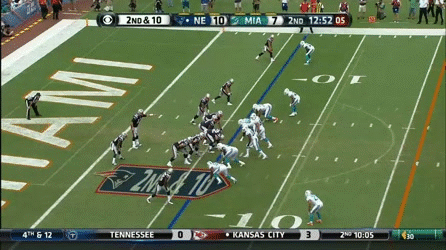
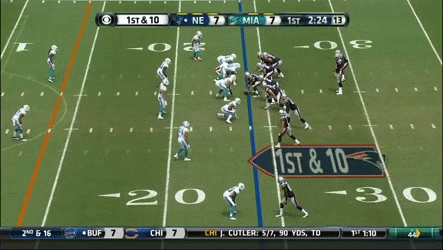
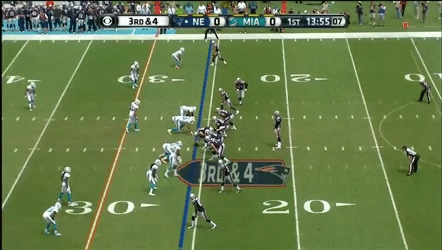
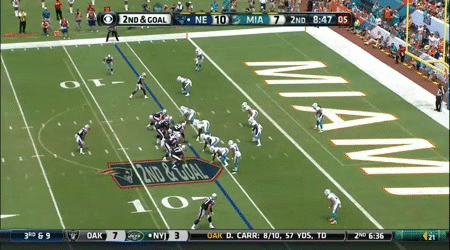
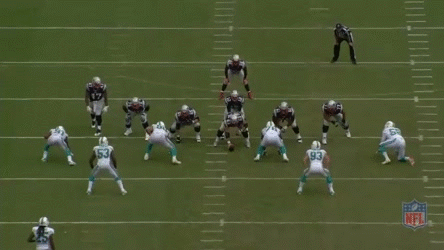
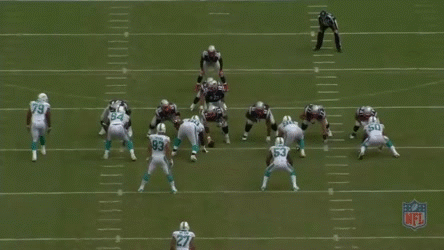

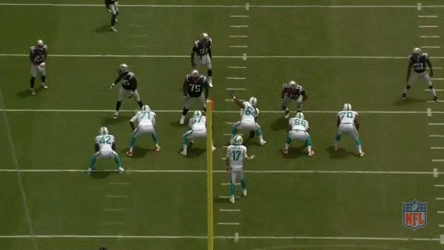
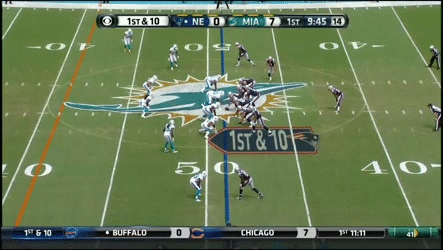
You must be logged in to post a comment.